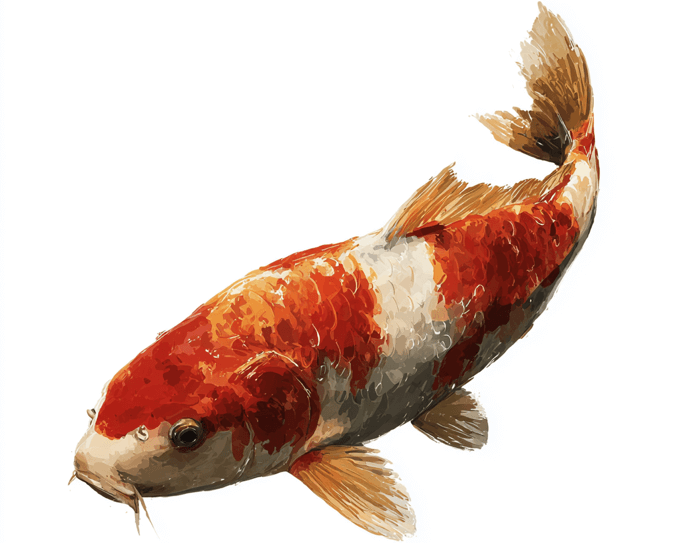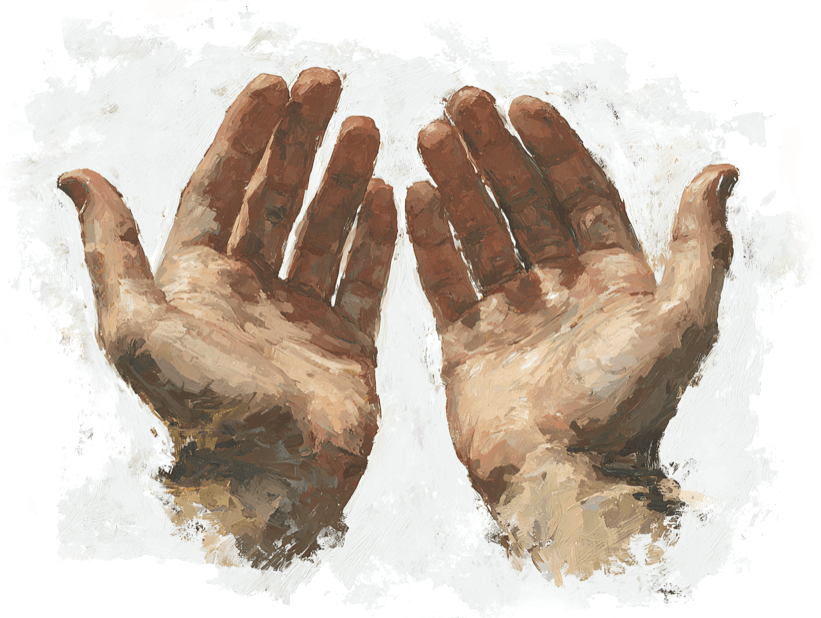Moving Attention and the Effortless Ease of Childhood Being
I need to be upfront about a couple of things: the first is that Michael Smith’s thread on Letting Go left such a huge impression on me in terms of being able to throw words around something unwordable which, in turn, made it more accessible to people and inspired me to do something similar and adjacent. The second is that, after years and years of on/off practicing meditation and reading Eastern philosophy, I think that I’ve been going in the wrong direction due to a series of misunderstandings that I want to talk about here because it might be helpful for people similarly confused as to the utility of a lot of this stuff.

What do they mean by “Attention”?
It’s common to come across the idea that you shouldn’t intellectualise this topic, and I agree - the more you add, the more you seem to lose in terms of obscuring the simplicity of what it is, so I’m going to try this in terms of removing confusion that I have encountered from misunderstanding1 attention, awareness, meditation, and being present.
Attention is different to Awareness. Maybe it’s just me, but I found myself using these terms interchangeably even though I knew on an intellectual level that Awareness and Consciousness itself were one in the same. But still, I regularly fudged the terms when talking about it to myself because they’re alphabetically and rhythmically close in the English language. That small, practically subconscious confusion likely contributed to me glossing over a lot of instruction around the topic. Attention (as I am starting to understand it) is similar to a ball of focus. It helps me to visualise that ball of focus as similar to the grey cursor on an iPad with the touchpad on a Magic Keyboard (see animation right or below depending on your device). For me, 99.5% of my attention is spent up in my head. That ball of focus lives there because thinking dominates where I put my attention, and as a result, I find myself ruminating on future events or past memories for the majority of the day, every day of the year.
This leads to feelings of not being present, or in my case, ruminating on where that sense of childlike ease went and how do I go about getting it back again? Which, ironically, leads to that attention ball going to thinking to try and fix it in a loop of:
- Need to restore childlike ease
- How can I do that? How can we fix this problem?
- Hey, I don’t feel very present. Where did that effortless sense of childlike ease and wonder go?
- Need to restore childlike ease
- How can I do that? …
The spoiler is: that sense of childlike ease was effortlessly present in my early years on the planet because, as a child, I didn’t spend 99.5% of my attention in my thoughts ruminating about the past or focusing on imagined futures. It was mostly spent in flow getting lost in whatever I was playing in that moment: building train tracks and lying down closely beside it to watch the trains pass in detail, tracing patterns in carpets then rubbing them out again, playing the hop-over-powerlines game from the rear seat in the car on a long journey - the usual, obscure things that felt more “alive” than day-to-day adulting.
The rest of this post is about how I think whatever that is (I’ve been calling it the Effortless Ease of Childhood Being), is still there and available, and (I think), it might be as easy as moving the ball of attention around to find it again.
Unsticking Attention
My initial misunderstanding of attention came partly from the literature on meditative practices and Eastern philosophy. I don’t think the translations and interpretations do a great job of articulating this idea (if I have this interpretation of attention correct).
Meditation2 is, in essence, the act of unsticking attention. For years, I wondered what was meant by “watching the breath” and why that seemed like a good thing to do, because whenever I followed this instruction, I would go into “manual breathing mode” and then the ball of attention would snap back up to thinking, or bounce between being in my chest where breathing was happening, then back up to thinking in a thought loop of:
- Shit. I’m manually breathing, go back to focusing on the breath you fool
- wait, we’re thinking aren’t we? But thinking isn’t bad, just acknowledge it, don’t judge…
- wait, still thinking, go back to manual breathing. Oh, why isn’t this automatic?
In short: focusing on the breath simply didn’t work for me. It doesn’t help that I’m a ridiculously shallow breather also. What has only recently clicked, and I could be colossally wrong but right in the placebo sense that it seems to work for me, is that this flavour meditation is the practice of moving that ball of attention from being solely anchored on thinking (which can only ever ruminate backwards or project forwards, it can’t do “now”) and move it to anchor that is nowing like the breath, or in my case, picking an anchor like the sensation of your hands.

Why Move Attention Elsewhere? Why Not Stay in Thought?
If thought is happening now, why can’t thought be an object of attention? It seems like this would work if you could chose the mechanics of thinking itself, if there was a sensation like the rising and falling of the chest or the buzzing of blood pumping through the hands but for thinking. But there isn’t. Just the contents of thought which can’t do now. Only past events (even thoughts like “I’m manually breathing” is behind the beat of now) and future events.
Moving attention to the breath or bodily sensations offers direct access to now. They exist purely in the present moment because they are nowing. Now appears to be the default mode that we were supposed to be abiding in before language started on its own evolutionary path, not unlike technology, where it continues to accumulate more and more labels for things which takes us further from the thing itself.
…if we look at a glass of wine closely enough we see the entire universe. There are the things of physics: the twisting liquid which evaporates depending on the wind and weather, the reflections in the glass, and our imagination adds the atoms. The glass is a distillation of the earth’s rocks, and in its composition we see the secrets of the universe’s age, and the evolution of stars. What strange array of chemicals are in the wine? How did they come to be? There are the ferments, the enzymes, the substrates, and the products. There in wine is found the great generalization: all life is fermentation. Nobody can discover the chemistry of wine without discovering, as did Louis Pasteur, the cause of much disease. How vivid is the claret, pressing its existence into the consciousness that watches it! If our small minds, for some convenience, divide this glass of wine, this universe, into parts—physics, biology, geology, astronomy, psychology, and so on—remember that nature does not know it! So let us put it all back together, not forgetting ultimately what it is for. Let it give us one more final pleasure: drink it and forget it all!
— Richard Feynman
Or in other words: thinking is useful for some things but it is not the experience of the thing itself. The Effortless Ease of Childhood Being, the purer version of who we are as humans, capital “K” Knows this, and the way back to it comes down to where we put our attention.
Meditation as a practice for creating the nimbleness required for moving the ball of focused attention makes sense because the more you practice unsticking attention from thought, the more mobile that ball of focus becomes.
I’ve made my main point at this stage. If you’re interested in two related detours, carry on…
Why Do I Feel More Alive When I’m Sick?
I’m going to take brief detour via another line of inquiry that has puzzled me for some time - and, in the spirit of posting on X/Twitter, I’m throwing out a thing to see if there are others who recognise it. There are occasions, as sad as this sounds, where I have been feeling quite unwell and when I’m on the mend, I have a deep sense of feeling more “alive” and “at ease” during that time period.
The most recent occurrence of this was last Christmas. I was hit by an almighty bug that came to a head on Christmas Eve. I started feeling weak and a bit run down overall, and it meant that I lost my appetite for Christmas dinner the next day - the BEST dinner of the year and this stupid bug was ruining what should have been a time where I could have been enjoying dinner, family, and playing with the kids full of the Christmas spirit. But I was feeling so out of it, that at one stage (being the precious little flower that I am), I started to feel so out of it that I felt like a stranger in my own body.
It was like I was remotely operating Jordan Moore, and the labels of “father”, “husband”, “company co-founder”, “designer”, were all losing meaning and felt foreign on this zombie-like spacesuit that I was lugging around the house for minutes at a time before settling on the sofa to sleep and wake periodically.
There was a frightening recognition of losing myself and falling into a new normal that seemed like it was here to stay. But as I started to feel better, the pieces and labels started falling back into place and I had this undeniable recognition of childhood “me” in the process. It was like meeting an old friend. There he was, and I noticed he shows up now and again when I get quite sick.
To close this strange detour, it seems to be the case that when I’m forced to stop (via something like a temporary illness) everything and rest deeply, and to let a degree of boredom back in, attention seemed to focus itself elsewhere in the body rather than thinking. When I’m sick, I’m too worn out to think, and attention doesn’t seem that interested in it either - it has other work to do. And in the process, I tend to feel oddly present.
Flow and Attention
Flow states are absolutely linked to being present. Flow states reliably move attention from thought to the activity itself; in that sense, the activity becomes an object of meditation. This shift induces feelings of loss of ego, a sense of timelessness, and deep immersion in the thing that you are engaging with.
Most people have a tendency to focus on the richly rewarding flow states like mountain climbing, tennis, solving a puzzle, but I’d also argue that “mindlessly” scrolling social media can be seen as another type of flow state - albeit a fast food one that is dependent on the type of consumption. If it’s funny videos on TikTok, I’m more likely to be in a fast food flow state. But if it’s silly political mud-slinging on Reddit, X, BlueSky, etc, I end up back in my head with thoughts like “all these people are wrong, none of this stuff REALLY matters,” and the attention ball returns to its old spot.
Flow always made sense to me experientially when I get lost in a task and lose a sense of identity in that I’m only focused on doing the thing at hand for the pure sake of doing the thing with no other agenda. Now that I have this ball of attention analogy to play with, I’m also able to connect the dots and see how the 99.5% of attention that wanted to roost up in my thinking brain because it was busy creating problems where there weren’t any moves elsewhere to attend to the task.

Reflections
Attention moves towards where it thinks it should be - whether that’s a flow state where you’re fully immersed in a task, moments of crisis where survival requires immediate focus (or, in my case, mild illnesses seems to trigger a shift). But in our otherwise comfortable lives, with no immediate survival concerns, the mind tends to predict and fabricate scenarios, believing it’s protecting us and hijacks the ball of attention for most of your waking hours.
The way back to the Effortless Ease of Childhood Being seems to be easier through practicing meditation with the intention of shifting attention from thought to the breath or, if you struggle with that like I do, ANY bodily sensation that is nowing on its own, to move the ball of attention from thought to feeling (from past and future to now).
-
Again, I’m trying to be careful about putting any amount of theory/knowledge on this. I just find that following intuition or following capital “K” Knowing can head in directions that are less useful for recognising the thing that is trying to be communicated, and if there’s a way to use theoretical knowledge to nudge intuition back onto a more useful course, then it’s helpful. ↩
-
Okay, SOME meditation practices, not all. In a similar way to riding a bike, you have different flavours: a gentle cycle to the bakery, a road race, BMX biking etc. ↩